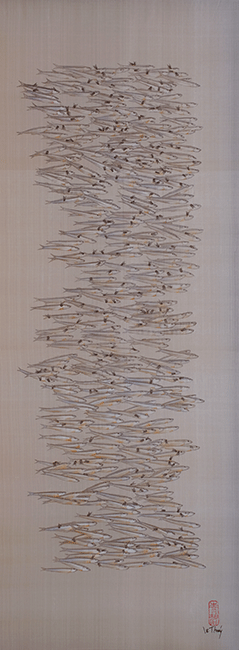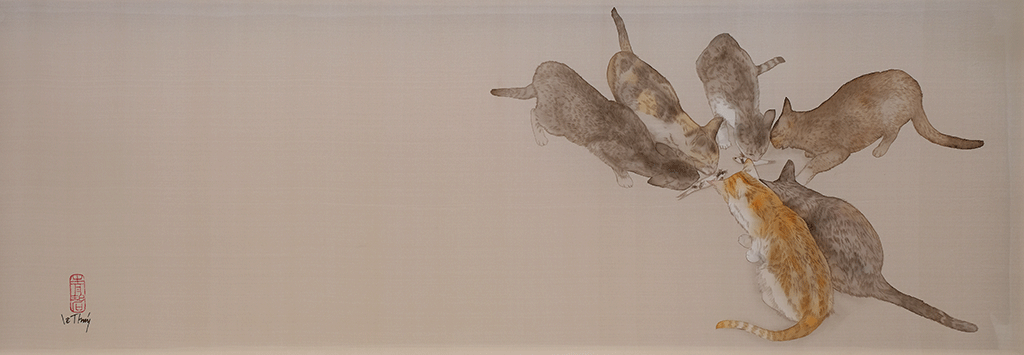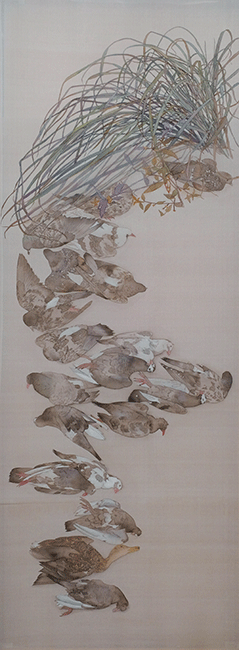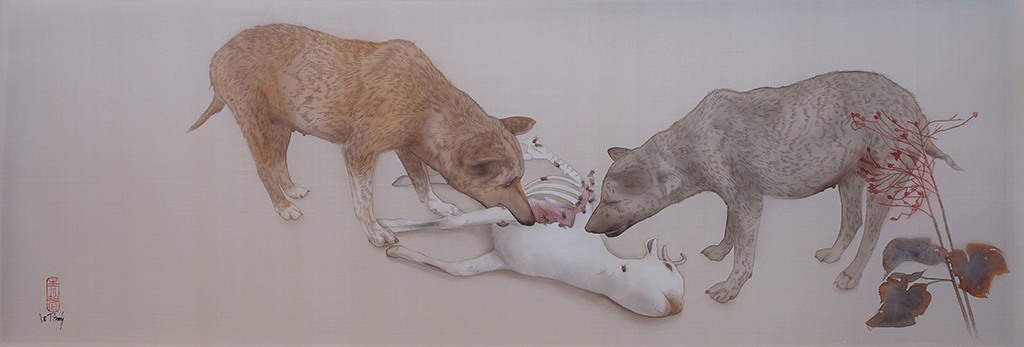Lê Thuý – Life Ordinary
18 February - 12 March 2020
Many first time viewers of Le Thuy will express a mixture of admiration and confusion when encountering her work. What at first glance appears ethereally beautiful also reveals itself to be deeply macabre. The silk paintings exhibit both the artistâs intense love of nature and her great lament for what is being lost in the natural world as mankindâs race forward continues. Le Thuyâs silk paintings take the micro-events that are taking place constantly in nature and shows them for…
Many first time viewers of Le Thuy will express a mixture of admiration and confusion when encountering her work. What at first glance appears ethereally beautiful also reveals itself to be deeply macabre. The silk paintings exhibit both the artistâs intense love of nature and her great lament for what is being lost in the natural world as mankindâs race forward continues. Le Thuyâs silk paintings take the micro-events that are taking place constantly in nature and shows them for…
Many first time viewers of Le Thuy will express a mixture of admiration and confusion when encountering her work. What at first glance appears ethereally beautiful also reveals itself to be deeply macabre. The silk paintings exhibit both the artist’s intense love of nature and her great lament for what is being lost in the natural world as mankind’s race forward continues. Le Thuy’s silk paintings take the micro-events that are taking place constantly in nature and shows them for the titanic life and death struggles that they really are.
Le Thuy says, “The works of my “Life Ordinary” collection depict my grief for the loss of the natural world, our collective loss. There is much evidence in literature, poetry, andarchitecture that celebrates the majesty of nature and our place within it. Now, we have nothing but pollution, ugly high rises, barren fields and diseased herds. Nature was beautiful, and we made it pitiful. And it would be pitiful if we only know the beauty of nature through recorded images of the past.”
Le Thuy continues, “I especially like the passage in Masanobu Fukuoka’s ‘On Straw Revolution’ which states ‘Snake bites frog. Hawk hunts snake. Wolf attacks hawk. One person kills the wolf, and later succumbs to tuberculosis. Bacteria grows in human corpses and the grass thrives on the nutrients from this bacterial activity. Insects attack plants and frogs feed on insects.’ Humans are just a part of the natural cycle of life. Going against nature will only lead to self-destruction.
“I choose images from nature and arrange them according to the law of survival. All living beings are wrestling with life and death approaches. As the bird lies decaying in the field, covered in flies, corn stalks wither desolately with only the echo of the water fowl in the emptiness. Even the comfortable herd struggles with nature for survival. I am recording a heroic epic about the death of all life. I hope that after death, life returns as ordinary.”
Read more
Read less










